
20-12-2025 23:08
Patrice TANCHAUDBonsoir, récolte sur sol sablonneux dans l'arri�

21-12-2025 09:32
Hello.A tiny ascomycete found embedded in wood in

20-12-2025 15:47
Mirek GrycHi.These grew on pine wood that was heavily covere

18-12-2025 21:17
Pol DebaenstThe identification took me to Byssonectria deformi

15-12-2025 07:09
 Danny Newman
Danny Newman
indet. Rutstroemiaceae sp. on unk. fallen leavesMc

19-12-2025 10:10
Patrice TANCHAUDBonjour, récolte réalisée en milieu dunaire, a

18-12-2025 17:23
 Bruno Coué
Bruno Coué
Bonjour,je serais heureux d'avoir votre avis sur c

18-12-2025 18:07
Margot en Geert VullingsThese plumes were found on rotten wood.They strong
Growing on Carex limosa leaves, in bog.
Apothecia stipitate, white with white or yellowish hymenium, disc to 0,5 mm in diam, all frb to 300 mk high, stipe about 150 mk high; edge ciliate from hairs (lens), outer surface and stipe covered by hairs as well.
Excipulum textura porrecta/prismatica at stem, textura globosa/prismatica at flanks, cells with thickened walls, about 10 x 6,5; hairs with broadened base and tip, grow from 1-2 globose cells at base, measured length x width at neck x width at tip: 47-70 x 2-3 x 3-5; asci cylindrical, clampless, pore amyloid, 33-44,5 x 3,5-4,2; paraphyses lanceolate, exceeding the asci for 30 mk, broadest ipart in the middle of length, wih 2-3 septa in basal part, sometimes with 2-3 outbranches in basal part, 63-73 x 2,6-3,4 (width in broadest part); spores narrow-fusiform, with small guttules at the ends, 14 (12,2-16,6) x 1,5 (1,4-1,6) (Q=9,5; N=17).

Hairs doesn't seem to be incrusted, but maybe they are so finely...

We do not know if your species has guttules in the paraphyses, but since it does not seem to change reddish with age, I assume it hasn't.
L. imbecille has much larger spores and a reddish hymenium. L. tenue has shorter spores. But what about Lachnum schoenoplecti? I noticed spores up to 28 x 2.3 µm, but also 12-20 x 1.6-1.9 (live).
Zotto
This specimen do not have reddish in color, and not turn reddish/brownish on drying, right.
I looked at at your specimens of L. schoenoplecti, it looks similar. Praphyses in mine more protruding above the asci. Host - yours 5688 collected from Carex as well? I downloaded your paper with sp. nov. description, will read it.

But protrusion is less so in the living state. In the protologue, 10-15 µm seems to refer to living asci.
here is the original article
Zotto

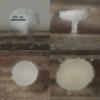
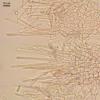

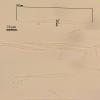
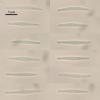
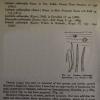
 Raitviir-amp-Blank-1998-Schoenoplectus-1-0001.jpg
Raitviir-amp-Blank-1998-Schoenoplectus-1-0001.jpg